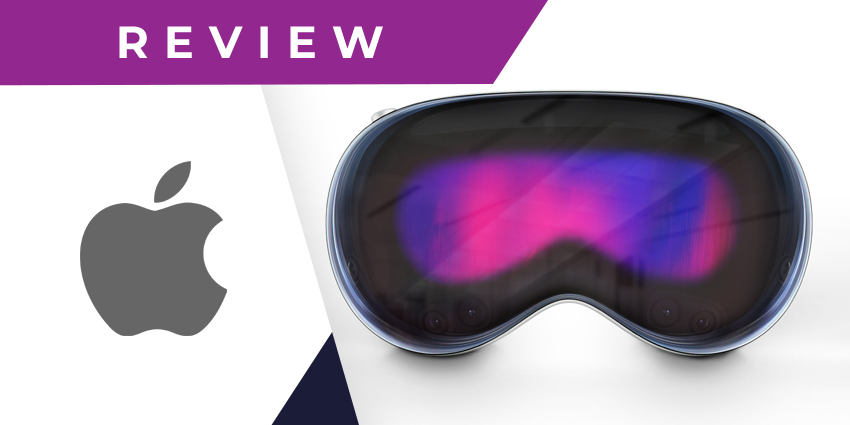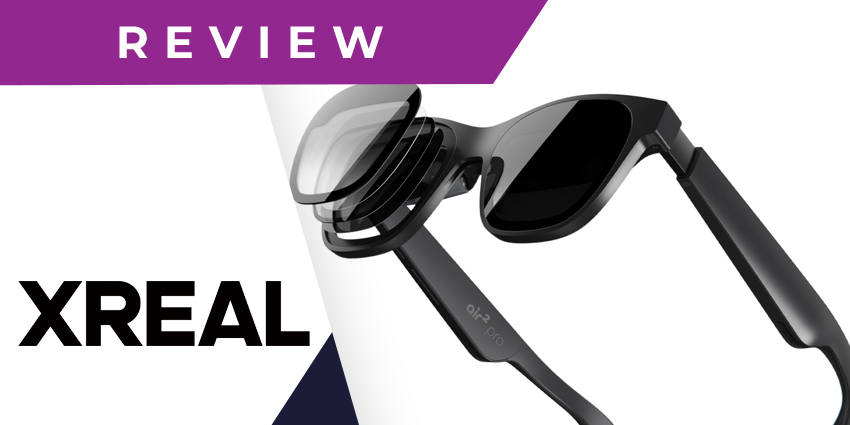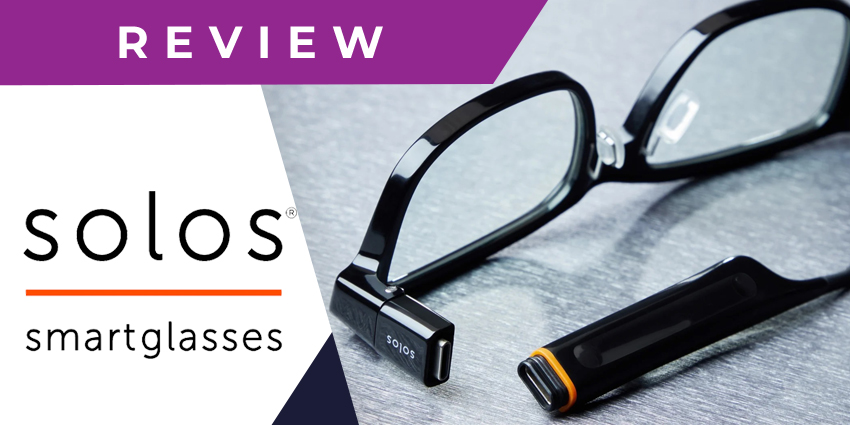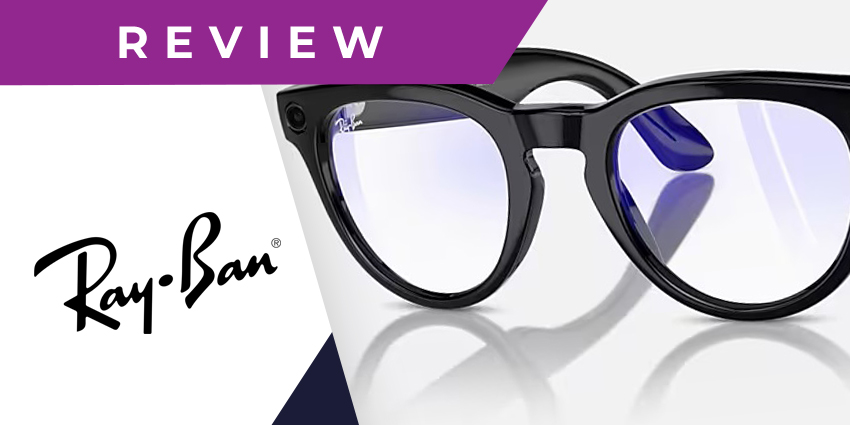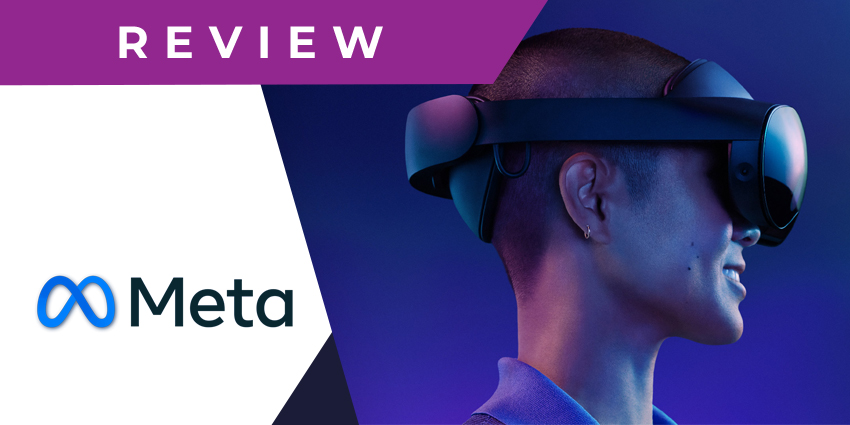In this XReal Air 2 Ultra review, we’re taking a closer look at the specs, design, and features of a set of spatial computing glasses eager to give Apple a run for its money. Introduced at the CES 2024 event, XReal’s latest smart glasses don’t just build on the functionality of previous XReal specs.
They promise a next-generation user experience powered by the latest developments in the spatial computing landscape. Positioned as a lightweight and more affordable competitor to the Apple Vision Pro headset, about to be released in February 2024, these specs could deliver the innovative AR experience businesses have been searching for.
Here’s everything you need to know about the features, specs, design, and performance of the XReal Air 2 Ultra glasses and whether they can beat the Apple Vision Pro.
XReal Air 2 Ultra Review: Early Verdict, Pros and Cons
Our hands-on XReal Air 2 Ultra review at CES 2024 gave us a sneak peek at what affordable spatial computing might look like. The glasses offer fantastic functionality, great visuals, and exceptional comfort compared to most headsets. However, they are limited in some areas, requiring a connection to a separate device for advanced functionality.
Pros:
- Powerful snapdragon processor with a proprietary computing unit
- Exceptional display with 52-degree FOV
- Comfortable and lightweight design
- Ease of use with hand and head tracking
- Flexible connectivity with a range of devices
- Attractive appearance
Cons:
- Still quite expensive for a set of AR glasses
- Limited standalone functionality
XReal Air 2 Ultra Review: The Specs
Though XReal was keen to show off its spatial computing specs at CES 2024, the list of specs for the headset has yet to be fully confirmed. We know the vendor is advertising their glasses as a spatial computing device rather than just a set of AR smart glasses.
This is likely an attempt to capture the attention of consumers jumping on the spatial computing bandwagon. Plus, it helps position XReal as a direct competitor to companies like Apple and Meta. However, the smart glasses are a world apart from the Vision Pro regarding specs, design, and functionality. We consider them “turbocharged” AR glasses (at least for now).
Announced specs include:
- Spatial computing via a Samsung processors, and an XReal custom computing unit.
- Screen mirroring with USB-C and HDMI video output.
- TUV certification for flicker-free, low blue light eye comfort.
- SDK support is scheduled for NRSDK 2.2.
- Hand tracking and head tracking.
- Six degrees of tracking with spatial anchors and depth mesh.
- 52-degree field of view.
- Compatibility with Windows, MacBooks, iPhone, iPad, Steam deck, PlayStation 5, Xbox, Nintendo Switch and Android devices.
- 80g weight
- 120 Hz refresh rate.
- 1920 x 1080 resolution per eye.
The Air 2 Ultra glasses are set to roll out in March 2024 for a starting price of $699, and pre-orders are already open. While this makes the glasses much more expensive than the previous XReal Air headset, they’re still much cheaper than Apple’s $3,500 Vision Pro.
XReal Air 2 Ultra Review: Design and Comfort
One thing that immediately caught our attention during our XReal Air 2 Ultra review was the design. These glasses are as sleek as they come, looking and feeling like a pair of high-end sunglasses. If you want a pair of smart glasses that you’ll feel comfortable wearing anywhere, Xreal has you covered. Though they are a touch heavier than standard specs, they weigh only around 80 grams.
That’s thanks to the titanium structure of the glasses, which gives them a robust and professional look while ensuring they’re still reasonably lightweight. After a short period of wearing these glasses, we could easily see how you’d be able to use them all day without experiencing VR sickness.
The specs evenly distribute their weight over your face and are highly adjustable. For instance, you can switch between three dimming levels at a touch for indoor and outdoor wear and content clarity. Plus, there are three temple adjustment options to choose from.
We particularly loved the zero-pressure nose pad and the fact that you can access detachable prescription lens frames if necessary.
Display and Sound Quality
Until now, many AR Glasses have struggled to offer a truly immersive experience. Fortunately, XReal might have finally discovered how to address this problem. Like the XReal Air glasses, they’re built for various use cases and offer exceptional visuals.
The glasses feature Micro OLED panels, created by Sony, with a resolution of 1920×1080 pixels per eye. Plus, there are multiple refresh modes, ranging from 90Hz to 120Hz. They also boast up to 500 nits of brightness and unit-based color calibration for exceptional accuracy.
Compared to the previous XReal glasses, the field of view has been upgraded from 46 to 52 degrees. Pair this with the fantastic electrochromic lenses for dynamic light blocking, and you have complete control over your immersive experience.
It’s not just the visuals that make an impact on these glasses, either. The directional audio is robust and powerful, thanks to 2 stereo speakers with built-in leakage reduction.
Plus, there are two microphones included for real-time communication. Though the audio lacks depth in some areas, we were still deeply impressed. You can even capture 3D spatial video with your specs, with high-quality audio and exceptional visual fidelity.
XReal Air 2 Ultra Review: Usability and Performance
During this XReal Air 2 Ultra review, we noted that the glasses were highly user-friendly, even for beginners. There are only a couple of buttons on the headset itself, including a multi-functional button for switching between dimming levels.
The spatial computing capabilities and powerful tracking tools also make it easier for the headset to track the movement of your hands and head in real time. At CES 2024, XReal laid out a demo environment with a set of cardboard controllers that the glasses could recognize.
You can sort through virtual environments in seconds using hand gestures, view contacts, set up a video call, and even experiment with different viewing modes. Every experience was deeply immersive, with a vast viewable area that felt natural.
The biggest downside was that the full scope of the glasses for spatial computing wasn’t accurately demonstrated at CES. The hand-tracking capabilities seem to need a little refinement. Plus, users were limited in how much they could interact with virtual elements. However, this could change when XReal introduces its new computing module.
On the plus side, the glasses include some excellent performance features for developers, including 6 degrees of freedom tracking powered by two 3D cameras. Additionally, XReal offered insight into what partnership opportunities would bring to the wearables going forward.
For instance, users could test a version of a Forma Vision holographic call designed for immersive collaboration. Unfortunately, we’ll need to wait until the custom computing unit is released before we can truly test the performance of these glasses.
XReal Air 2 Ultra Review: The Potential
Although our XReal Air 2 Ultra Review was a little stunted due to missing the custom computing unit from the XR team, we were still impressed. The original XReal Air 2 glasses gave us a glimpse of spatial computing in the AR world. Now, XReal is building on those foundations.
The glasses hold phenomenal potential for companies and creators investing in immersive tech. They may be expensive, with a $700 price tag, but they’re much cheaper than an Apple Vision Pro or similar “spatial computing device.”
One thing we will note is that you probably shouldn’t expect a whole “spatial experience” just yet. These glasses mainly offer advanced screen mirroring capabilities with more tracking technologies. In the future, however, XReal can potentially create a real market leader if its custom computing unit makes a difference to the functionality.
XReal already says the unit (yet to be released) will offer users the most advanced AR experience to date. Additionally, since the glasses are compatible with various spatial computing technologies and hardware, they could deliver exceptional versatility to all users.
The Verdict: What We Think So Far
We’ll build on this XReal Air 2 Ultra review in the coming months after the XR company introduces its computing unit and builds on the glasses’ features. For now, we can only look at these glasses’ potential to determine whether they’re worthwhile for companies.
If XReal delivers on its spatial computing promises, the XReal Air 2 Ultra glasses could represent an excellent alternative to tools like the Apple Vision Pro, particularly for those prioritizing comfort and ergonomics. However, you will need a separate device (like a smartphone) to run applications.
Additionally, it’s worth noting that we’ve yet to see whether XReal can offer access to a wide range of apps and software solutions, similar to Meta and its Quest library.
For now, we’re impressed by the specs based on their design, comfort, and performance, and we’re excited to see what XReal reveals next.


